Author: Bianca Gamez
Location: Normandy, France
Pronouns: She/Her/Hers
Europe, especially France, has so much history within it when dealing with World War 2, and historical war sites in Europe were one of the things that I have always wanted to see in person. Since I finally had the opportunity to study abroad in Paris, I decided to take advantage of that and go up north to Normandie and visit Omaha Beach and other D-Day historical sites. Since I wasn’t the only one who wanted to see historical landmarks, some friends in the same program as me, joined along for a weekend in Bayeux. We took a 2-hour train ride, which is very typical here in Europe when traveling to places. We ended up arriving at Bayeux late at night due to some difficulties with the train, but we were still optimistic that we would still enjoy all of Saturday and half of Sunday.
The next morning, we decided to have breakfast at a cute little pink café. Since most of the group members were females, we all pretty much felt as if we were in a Barbie playhouse because of how much pink was in the place. There were also doilies and news clippings from years ago. However, overall, it was a cute little café and the owner was super sweet with us and would explain what was on the menu and what she would recommend. In the end, we ended up ordering a typical French breakfast which was tea or hot chocolate with croque-monsieur or madame. A croque-monsieur is a piece of long bread that is toasted with ham and cheese, and the croque-madame is the exact same thing except it has a sunny side up egg on top.
After breakfast, we decided to start our adventures in Bayeux. We visited one of the cathedrals, Notre Dame de Bayeux, that was in the middle of the town. This cathedral was built in 1230-1270 with medieval architecture.

(This is the front of Notre Dame de Bayeux)

(This was the stained glass inside the cathedral)
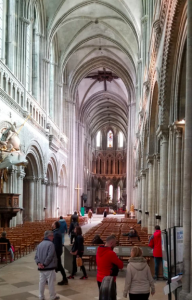
(Once you enter the cathedral this is the first thing you see)
The next historical site that we visited was the Bayeux War Cemetery. This cemetery has almost every soldier that fought in the Bayeux War. Walking through the cemetery was an unexplainable feeling because seeing all the tombstones was astonishing since many were from different countries, different ages, and had different experiences. For instance, some tombstones read “unknown soldier” and others would read “to my only son”. It was hard walking through the place and just realizing that some of the soldiers were our age when they died. It was a weird feeling because they fought fighting for what we currently have today which one appreciates a lot but it is also sad to realize that many had to lose their lives in order for that to even be possible.
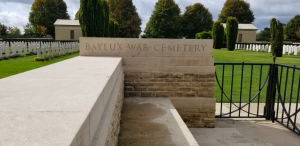
(This is the sign before you enter the cemetery)

(One side of the cemetery that shows a couple of many tombstones)
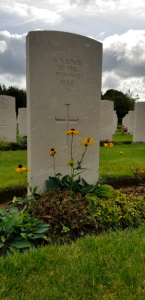
(An unknown soldier’s tombstone. It was sad seeing how many of these were here.)
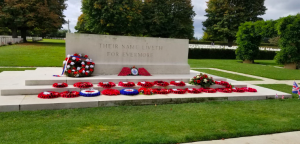
(This is placed right in the middle of the cemetery)
Next to the cemetery, there is a museum that houses articles of clothing and war items like knives, bombs, and invasion plans. Inside the museum, there is also a small theater that explains D-Day and how the plans for the invasion were planned out and what steps they took.
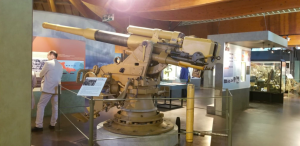
(One of the military machines used during D-Day)

(Another one of the equipment that was used on D-Day)

(These were the badges that were used by the US)
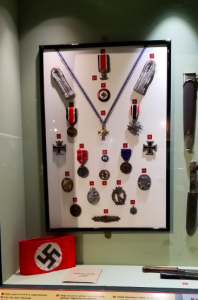
(Some of the badges that were used by the Nazis)
The last historical site that we ended up visiting was Omaha Beach, where D-Day took place. We had to take a taxi all the way to the beach since it was too far away to walk to. When we got there, it felt so surreal because the atmosphere felt so peaceful and calm, but when I reflected to what happened at that beach it was not like that at all.
Overall, the trip to Bayeux and Omaha Beach was an amazing opportunity! I had a great time with my friends and also had a moment to reflect back on life and those who fought for us and our future.

(The view of Omaha Beach)

(One of many bunkers that can be found at Omaha Beach)
Leave a Reply